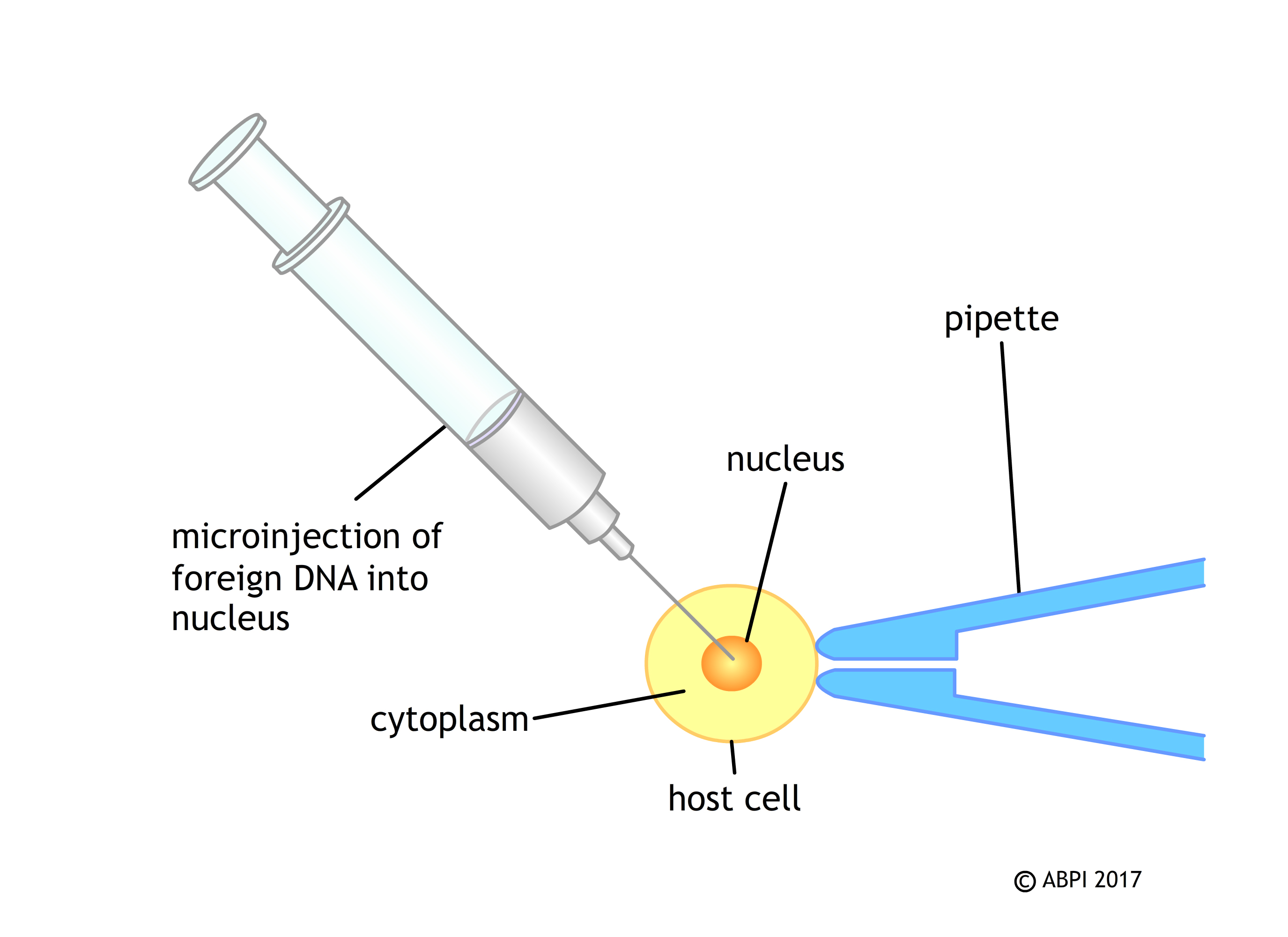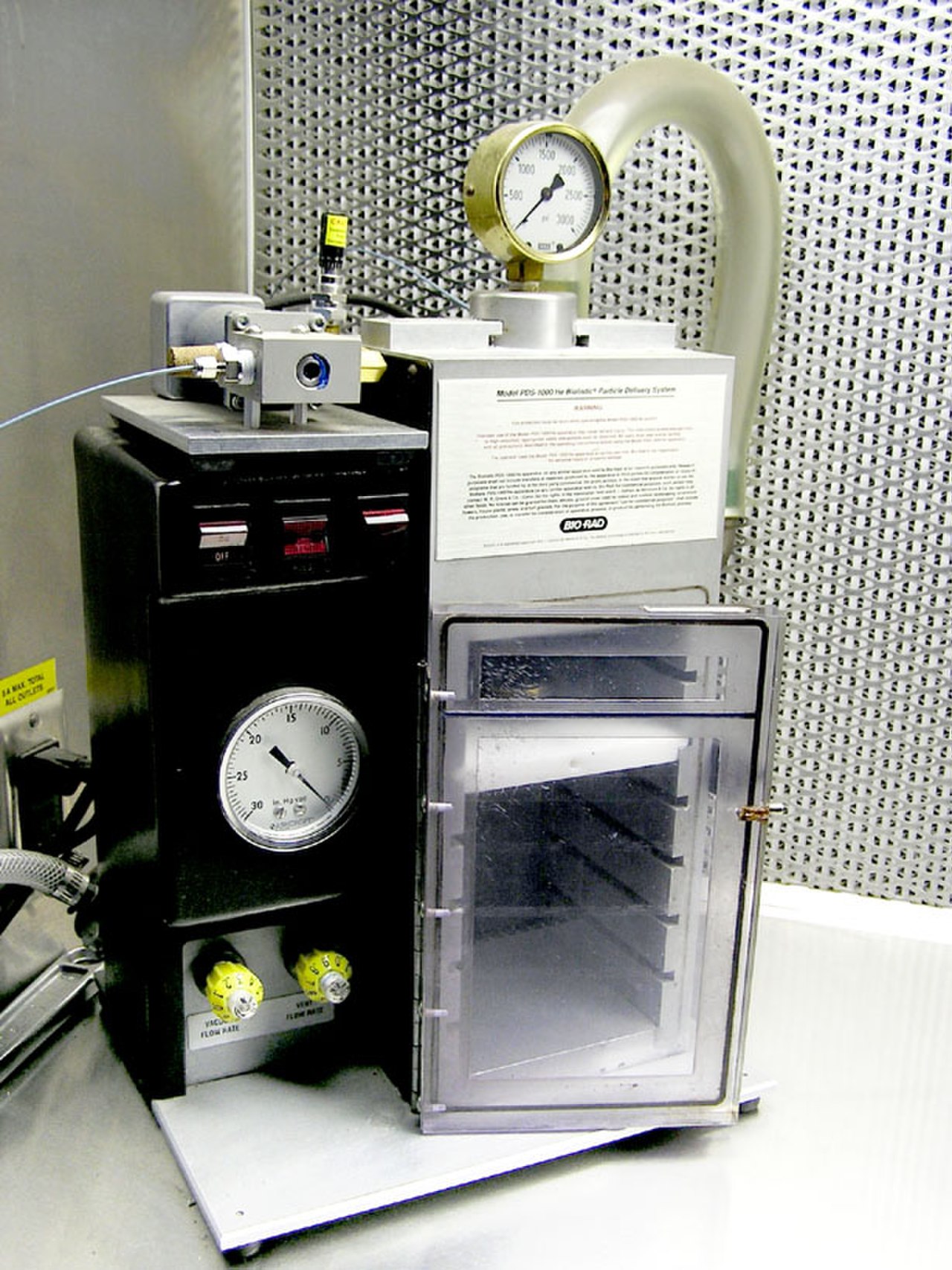This topic takes on average 55 minutes to read.
There are a number of interactive features in this resource:
 Biology
Biology
 PSHE / Citizenship studies
PSHE / Citizenship studies
 Science (applied)
Science (applied)
Taking genes from one organism and putting them in another, where they work as normal, still sounds like something from a science fiction story. But far from being the product of a writer’s imagination, genetic modification is well and truly science fact!
The first way developed of transferring genes from one organism to another is the method described on our Genetic engineering poster and in “How does genetic engineering work?”
A number of other ways have also been developed and they are all used in different situations to transfer genes from one organism to another for a variety of different reasons.
In this method, the desired gene is inserted into the genetic material of a virus. The virus is then allowed to infect the cells where the gene is needed. When the viral DNA infects the host cell, the desired gene goes with it and is incorporated into the host DNA. The virus itself is modified so that although it can carry the new gene into the cell, it cannot take over the metabolism to make thousands of copies of itself. As the cells then replicate normally, the new gene replicates as well and begins to produce proteins.
This is one of the simplest ways of manipulating the genes. The desired gene is removed from the original cell using a microscopically fine glass micropipette. It is then injected directly into the nucleus of the recipient cell. The injected gene incorporates itself into the host genetic material and begins to code for proteins. The main limitation to this technique is that not all cells are big enough to allow the micropipettes to penetrate without damaging the cell.

In microinjection the new DNA is introduced directly into the nucleus of the cell to be modified.
This technique involves making pores appear artificially in the membranes of the host cell so that the new DNA can enter the cell. The pores are created by exposing the cells to a weak electrical current. Amazingly, once a gene is inside a cell it will often find its way into the nucleus, because although a whole chromosome cannot escape through the nuclear pores, single genes can fit through.
This is another technique which relies on making artificial pores in the cell membrane to allow the new genes to go in. This method involves bathing the cells in a chemical solution which causes pores to appear in the cell membrane.
Here pores are created artificially using tiny laser beams to create holes in the membrane of the host cell before the new genes are introduced.
In this technique lasers are used to cut genes or larger chunks of chromosomes out of the DNA of one organism. They can also cut open the DNA of the recipient organism to make it easier for the new genes to be incorporated.
In yet another technique that sounds pure science fiction, scientists have found a way of firing new genes directly into the host cell. In one early model, tiny metal slivers, much smaller than a cell in size, were coated with the gene to be engineered into onion cells, chosen for their large size. The gene-coated metal slivers are then added to a cartridge which is loaded into a shotgun and fired. A metal plate with minute holes in it acted like a ballistic sieve, stopping the cartridge but allowing the slivers to pass through and into a solution of onion cells on the other side. Once in the cells, the genetic material is carried into the nucleus and is incorporated into the host genes, where as usual it directs protein synthesis. Gene guns are rather more sophisticated now but the principles are still the same. They are largely used for modifying plant genomes, but can be used for a range of other organisms too.

Gene guns fire new genes directly into the cells of the organism to be modified.
Nanoparticles have also been developed which can carry genes into cells. The nanoparticles are usually made of biodegradable polymers which can pass through extracellular and intracellular membranes, carrying the imported genes in to the cell DNA. They can also be used to genetically modify the DNA in mitochondria and chloroplasts.